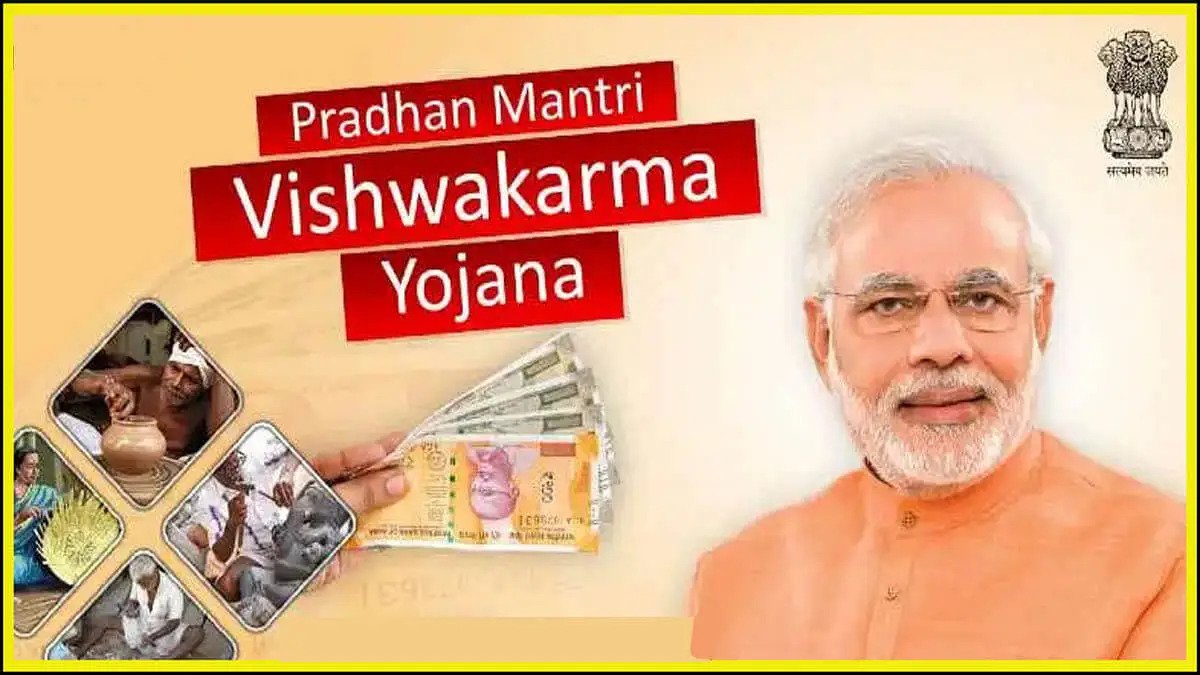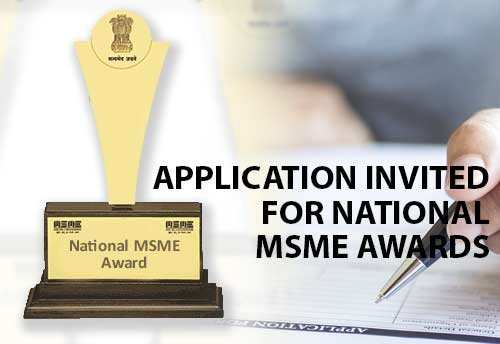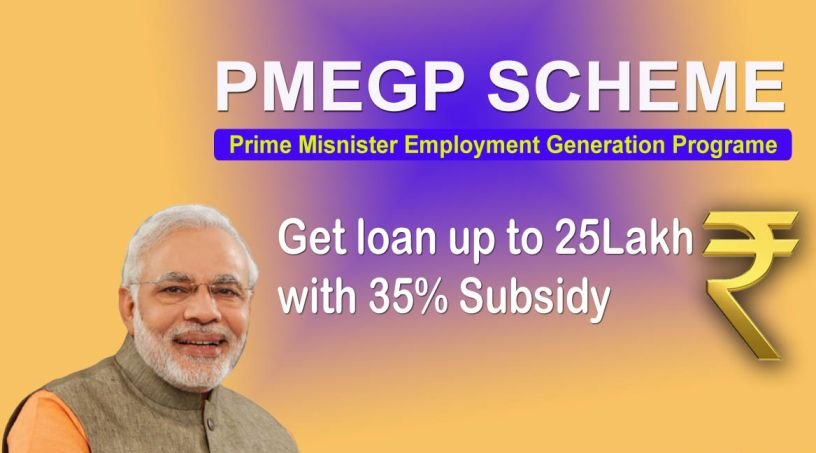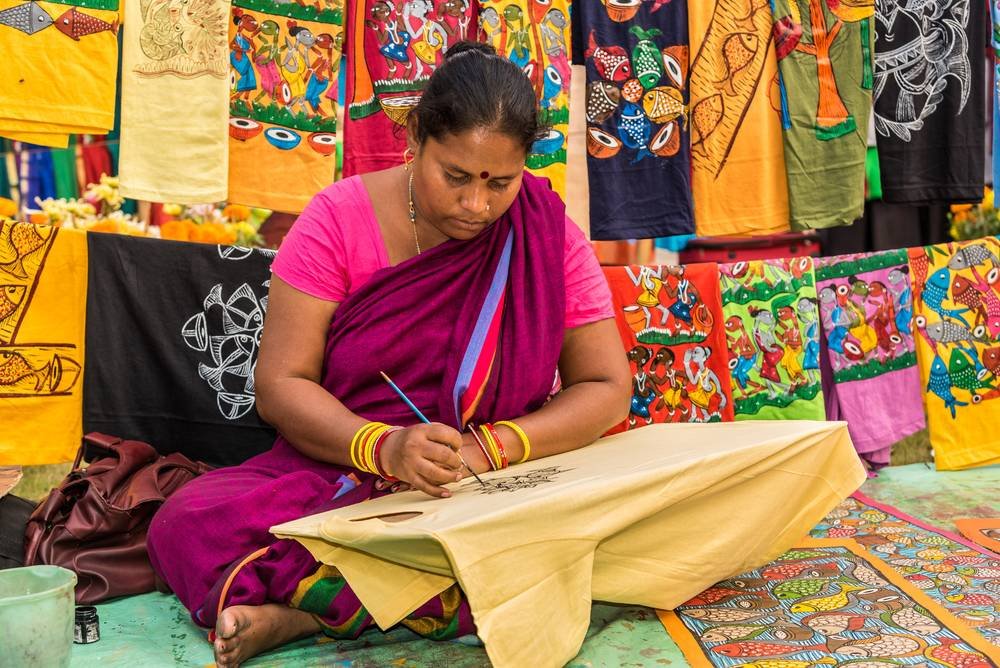
PM Vishwakarma Scheme
PM Vishwakarma, a Central Sector Scheme, was launched on 17th September, 2023 by the Prime Minister to provide end-to-end support to artisans and craftspeople who work with their hands and tools. The Scheme covers artisans and craftspeople engaged in 18 trades, viz.(i) Carpenter (Suthar/Badhai); (ii) Boat Maker; (iii) Armourer; (iv) Blacksmith (Lohar); (v) Hammer and Tool Kit Maker; (vi) Locksmith; (vii) Goldsmith (Sonar); (viii) Potter (Kumhaar); (ix) Sculptor (Moortikar, stone carver), Stone breaker; (x) Cobbler (Charmkar)/ Shoesmith/Footwear artisan; (xi) Mason (Rajmistri); (xii) Basket/Mat/Broom Maker/Coir Weaver; (xiii) Doll & Toy Maker (Traditional); (xiv) Barber (Naai); (xv) Garland maker (Malakaar); (xvi) Washerman (Dhobi); (xvii) Tailor (Darzi); and (xviii) Fishing Net Maker.
The Scheme envisages provisioning of the following benefits to the artisans and crafts persons:
(i) Recognition: Recognition of artisans and craftspeople through PM Vishwakarma certificate and ID card.
(ii) Skill Upgradation: Basic Training of 5-7 days and Advanced Training of 15 days or more, with a stipend of Rs. 500 per day;
(iii) Toolkit Incentive: A toolkit incentive of upto Rs. 15,000 in the form of e-vouchers at the beginning of Basic Skill Training.
(iv) Credit Support: Collateral free ‘Enterprise Development Loans’ of upto Rs. 3 lakh in two tranches of Rs. 1 lakh and Rs. 2 lakh with tenures of 18 months and 30 months, respectively, at a concessional rate of interest fixed at 5%, with Government of India subvention to the extent of 8%. Beneficiaries who have completed Basic Training will be eligible to avail the first tranche of credit support of upto Rs. 1 lakh. The second loan tranche will be available to beneficiaries who have availed the 1st tranche and maintained a standard loan account and have adopted digital transactions in their business or have undergone Advanced Training.
(v) Incentive for Digital Transaction: An amount of Re. 1 per digital transaction, upto maximum 100 transactions monthly will be credited to the beneficiary’s account for each digital pay-out or receipt.
(vi) Marketing Support: Marketing support will be provided to the artisans and craftspeople in the form of quality certification, branding, onboarding on e-commerce platforms such as GeM, advertising, publicity and other marketing activities to improve linkage to value chain.
In addition to the above-mentioned benefits, the Scheme will onboard the beneficiaries on Udyam Assist Platform as ‘entrepreneurs’ in the formal MSME ecosystem.
Enrolment of beneficiaries shall be done through Common Service Centres with Aadhaar-based biometric authentication on PM Vishwakarma portal. The enrolment of beneficiaries will be followed by a three-step verification which will include (i) Verification at Gram Panchayat/ ULB level, (ii) Vetting and Recommendation by the District Implementation Committee (iii) Approval by the Screening Committee.
For more information, the Guidelines of PM Vishwakarma can be accessed at pmvishwakarma.gov.in. For any queries, artisans and craftspeople may call at 18002677777 or email at pm-vishwakarma@dcmsme.gov.in.

Scheme of National Awards for MSMEs
O/o DC(MSME) New Delhi is inviting applications from eligible MSME Units for National Awards. The modified scheme guidelines are available at https://dashboard.msme.gov.in/na/Ent_NA_Admin/NA_Guidelines.pdf
The applicants have to submit online applications at https://dashboard.msme.gov.in/na. It is requested to kindly disseminate this information amongst eligible award worthy MSME units under your jurisdiction.

Govt extends PMEGP scheme for five more years with Rs 13.5k crore outlay
Ease of Doing Business for MSMEs: The government on Monday announced the extension of its scheme for employment generation Prime Minister’s Employment Generation Programme (PMEGP) over the 15th Finance Commission Cycle from 2021-22 to 2025-26 with an outlay of Rs 13,554.42 crore. In addition, multiple modifications have also been made to the scheme including increasing the maximum financial assistance offered from existing Rs 25 lakh to Rs 50 lakh to entrepreneurs for setting up new manufacturing units and from existing Rs 10 lakh to Rs 20 lakh for new service units.
Launched in 2008-09, the scheme has supported around 7.8 lakh micro enterprises with a subsidy of Rs 19,995 crore to create employment for around 64 lakh people, the MSME Ministry said in a statement. Around 80 per cent of the units assisted under PMEGP are in rural areas and about 50 per cent units are owned by scheduled caste, scheduled tribe and women entrepreneurs. Khadi and Village Industries Commission (KVIC) is the national nodal agency of the scheme.
The scheme also modified its definition of village industry and rural area to include areas falling Panchayati Raj institutions to be accounted under rural areas and areas under municipality to be recognised as urban areas. Moreover, all implementing agencies including state and district level state offices of KVIC, state KVIBs and district industries centres have been allowed to receive and process applications in all areas irrespective of the rural or urban category.
The government said the extension will create sustainable estimated employment opportunities for about 40 lakh people in five financial years. The margin money subsidy to be given to potential entrepreneurs would be 25 per cent of the project cost in urban areas and 35 per cent in rural areas for special category applicants including SC, ST, OBC, women, transgender, physically disabled, north-eastern region, aspirational and border district applicants, according to the guidelines. For General category applicants, 15 per cent subsidy of the project cost would be provided in urban areas and 25 per cent in rural areas.
Meanwhile, the number of jobs generated under the scheme through new enterprises set up had hit a record high of 8,25,752 in FY22, the Ministry had said in April this year. Also, the number of enterprises set up during the year jumped over 1 lakh to 1,03,219 for the first time in the past 14 years. The growth in units set-up and employment created under PMEGP in FY22 was up by 39 per cent each from FY21, while the margin money distribution (subsidy) had jumped 36 per cent.

Consortia & Tender Marketing
Promotion of the product of Micro and Small Entrepreneurs is one of the major objective of the Corporation. In the present competitive scenario a need has been felt to facilitate Micro and Small Enterprises to market their goods / services individually or collectively through ‘Consortium’. Accordingly, the scheme for promoting the products of the MSEs has been reviewed in 2011 & named as “Consortia and Tender Marketing Scheme”.
1. The special features of the scheme:-
- (i) The scheme will cover Micro & Small Enterprises registered with NSIC under its Single Point Registration Scheme (SPRS). It would also cover Micro & Small Enterprises who apply to get themselves registered with NSIC under the SPRS along with all required documents in terms of the scheme and their factory is inspected before filing of tender in terms of the Tender Marketing Scheme.
The scheme shall not cover unit(s) engaging in ‘trading activities’ without value addition/packing/ branding. - (ii) The scheme also covers the method of selection of the units for participation in the open tenders and single tenders on nomination basis.
- (iii) The scheme takes cares of providing EMD and security deposit on back to back basis.
- (iv) The scheme inter alia includes the procedures for formation of Consortium, Capacity Building of MSEs by formation of consortia of the units manufacturing similar products, participation in tenders on behalf of units in a ‘consortia’ to secure orders in ‘bulk’ quantities, distribution of orders amongst units in a ‘consortia’ as per their capacities, facilitate the ‘consortia’ members in meeting their raw materials requirements & facilitating ‘Credit’ for the supplies made.
- (v) To accommodate provisions of this scheme, the legal document such as individual agreement by the units, agreement to be executed by the consortium, board resolution, power of attorney and other related document have been revised and simplified.
- (vi) For facilitating promotion and development of Micro & Small Enterprises, the Government of India, Ministry of MSME vide Gazette Notification No. S.O. 581(E) dated 23rd March, 2012 has circulated the Public Procurement Order 2012 for MSME. In the above Public Procurement Order, the Govt. of India has mentioned that that “Annual goal of procurement also include sub-contracts to Micro and Small Enterprises by large enterprises and consortia of Micro and Small Enterprises formed by National Small Industries Corporation”.
- (vii) NSIC formed Consortia of Micro & Small Enterprises under its Consortia & Tender Marketing Scheme and is supplying the required stores / items and rendering the services as required by the Govt. Depts. / PSUs. NSIC offices continuously monitor the consortia and form new ones depending upon the requirements.
2. APPLICATION FORM:
The application form, in the prescribed format (Annexures – A and A-1) for enlistment under the Tender Marketing Scheme is to be submitted by the applicant Micro & Small Enterprise (MSE), duly signed by the authorized signatory i.e. Proprietor / Partner(s) / Director(s) of the firm / company / society along with the documents mentioned in the application form. These documents would also suffice wherever the enlisted unit wants to participate in the tender and /or form/join a consortium.
3. FIXATION OF LIMIT FOR TENDER PARTICIPATION:
- 3(a)In respect of enlisted units willing to participate in tender through NSIC, the branch office shall fix an overall limit up to which the tender(s) can be participated on behalf of such unit at any point of time. The limit shall be the higher of:
- 300% of the monetary limit fixed for the unit under the Single Point Registration Scheme, or
- Last year’s turnover, (The ‘Last year’s turnover’ should be turnover for a financial year and the same may either be as per the last audited accounts or as per the provisional results for a financial year, duly certified by the Chartered Accountants).
- Where during the financial year in progress the unit has recorded an appreciable hike in its turnover (duly certified by the Chartered Accountant) with which it exceeds its last year’s turnover or the overall limit as mentioned at (i) above, benefit shall be extended to such units and their overall limit may be fixed at the highest value amongst i, ii, or the value of turnover during the financial year in progress.
- 3(b)While fixing the overall limit the operating and installed capacity of the unit may also be considered.
- 3(c)The fixation of the limit shall be done by the committee consisting of the Branch Head, Accounts Head and Business Head.
- 3(d)The limit so fixed shall remain valid for a year and is subject to review/ renewal annually.
- 3(e)While deciding the overall limit to be fixed for units operating as a consortium, the limits fixed in respect of individual unit as per procedure mentioned above, shall be clubbed. The limit so fixed for a consortium shall remain valid for a year and is subject to review/ renewal annually.
- 3(f)In case a consortium gets expanded (by the additions of a unit / units) and / or shrunk (by the withdrawal of a unit / units) then:
- 3(g)On expansion of the consortium, the overall limit shall be enhanced after working out the limit in respect of the unit / units added by fixing their limits as per the procedure mentioned above.
- 3(h)On withdrawal of unit / units from a consortium, the overall limit shall stand reduced equivalent to the limit fixed in respect of such units.
- 3(i)However, the limit of the unit shall get vacated to the extent of the order already executed. (For example a unit having a limit of Rs. 15 crore and an order in execution for Rs. 10 crore out of which it has already executed order worth of Rs. 3 crore, the balance limit available for tender participation at this point shall be Rs. 8 crore).
After completion of the above, in respect of units found fit for enlistment under the scheme, an Enlistment Letter shall be issued by the branch.
- Annual Fee Structure of Enlistment & Renewal under Consortia & Tender Marketing SchemeS.No.CategoryAnnual / Renewal Fee1.If Monetary Limit under SPRS is up to Rs. 100 lacsRs. 1,000 + GST2.If Monetary Limit under SPRS is more Rs. 100 lacs and up to Rs. 500 lacsRs. 2,500 + GST3.If Monetary Limit under SPRS is above Rs. 500 lacsRs. 5,000 + GST4.Units owned by SC/ST entrepreneurs are exempted from the enlistment fee5.There will be no fee for the formation of new / renewal of Consortia. However, while at the time of participation in tender by consortia members, enlistment fee mentioned above will be applicable.
- SERVICE CHARGES UNDER CONSORTIA & TENDER MARKETING SCHEME (on line/off line) Opender Tender/Limited enquiries/nomination basis/Repeated Orders etc.
The service charges for various types of above said tenders are proposed on the basis of value of tender irrespective of their category.Tender value (Rs.in Cr.)Revised Service charges on Bill value before GST (%)IndividualConsortiaUp to 5545-104310 & above32.5
In case of micro units we may reduce the service charges by 0.5% on the above said charges.
In case EMD /and/ or Security Deposit are arranged by NSIC 1% Additional Service Charges would be charged. The said service charges are excluding GST. The services charges shall be deducted from the payment receipt from the buying department and after deducting eh service charges balance amount may be released to the MSE/Consortia. .
Note:
Where the NSIC is required to participate in pre-dispatch inspection team along with the buyer department or other agency, a higher rate of service charge can be levied on case to case basis.
Validity of Consortia Agreement
Consortium agreement entered into between the Corporation and Consortium shall be valid till officially liquidated by all members and the intimation being served on the respective branch that they (Consortium) do not want to continue as a Consortia members. However, in case of inclusion of new member/s or member/s leaving the consortia of change in Constitution of any member , fresh agreement may be obtained. In order to ascertain the change in the Constitution or addition/deletion of the members, a declaration to the effects to be taken from consortia members that their consortium is alive and there is no change.

NSSH
National Scheduled Caste and Scheduled Tribe Hub
India is witnessing rapid growth and prosperity. For this to be truly inclusive, all sections of the society need to partake in this prosperity. Besides wage employment and education, the marginalized sections of the society also need to envision, create and scale – up ventures to be a major participant in this growth story. While in the past, there has been some increase in the number of SC/ST owned enterprises, this needs to increase substantially to enable the socio-economic empowerment of the SC/ST communities. In this context, the National SC/ST Hub is an initiative of the Government of India targeted towards developing a supportive ecosystem towards SC/ST entrepreneurs.
The National SC/ST Hub (NSSH) would provide professional support to the SC/ST enterprises thereby enabling them to effectively participate in public procurement process. This would involve participation by CPSEs/Central Ministries, States, Industry Associations such as DICCI and others. The Hub would also work towards the development of new entrepreneurs to participate in procurement process leveraging on the ‘Stand up India’ programme. Selected entrepreneurs would be provided with support and mentoring by industry experts, CPSEs, and incubators.
To start with, the Ministry of Micro, Small and Medium Enterprises (M/o MSME), has made an initial allocation of Rs. 490 Crore for the period 2016-2020 for the National SC/ST Hub. Discussions with various stakeholders have enabled the Ministry to create an initial agenda for action on this front. While the agenda for action is flexible and would evolve with further inputs from stakeholders and more robust data, initially it attempts to address gaps that exist across multiple drivers of the entrepreneurial eco-system.
The Hub would operate out of the National Small Industries Corporation (NSIC) headquartered in Delhi, supported by a special cell created for this purpose. All new and existing SC/ST entrepreneurs would be registered on the MSME Databank (www.msmedatabank.in) of the Ministry of MSME that would form a reliable database to enhance accessibility for the procurement agencies. A separate website www.scsthub.in has been launched to apprise the stakeholders about the activities of the Hub.
High Powered Monitoring Committee
Minister of MSME is the chairperson of the committee. The committee members are representatives of various stakeholders including states, various ministries, industry associations & SC/ST entrepreneurs.
Advisory Committee
The Chairperson of this committee is Shri Milind Kamble, Chairman, DICCI (Dalit Indian Chamber of Commerce & Industry). This committee would work under the High Powered Monitoring Committee in order to bring the industry and SC/ST entrepreneurs’ perspective to the Hub with the purpose of developing an effective, mutually beneficial relationship between the target group and the Government.
Empowered Project Approval Committee
Secretary, Ministry of MSME chairs this committee. As the Hub is dynamic in nature and would evolve over the envisaged period, requirement of funds for various activities is likely to evolve depending on the emphasis areas or changes in identified focus areas. This Committee would ensure such flexibilities with a view to accommodate changing requirements of SC/ST entrepreneurs.

Raw Material Assistance
RMA against Bank Guarantee
Raw Material Assistance Scheme aims at helping MSMEs by way of financing the purchase of Raw Material (Both indigenous & imported). This gives an opportunity to MSMEs to focus better on manufacturing quality products.
Benefits of the Scheme
- Facilitating procurement of Raw Material with credit support up to 180 days
- MSMEs helped to avail Economics of Purchases like bulk purchase, cash discount etc.
How to Apply
The Entrepreneurs are required to apply for Raw Material Assistance only on the prescribed application forms. The application forms downloaded from the link given below may be filled and can be submitted to the nearest Branch Office. The blank forms are also available free of charge from the Branch offices.
The Process
- Duly filled application form is to be submitted along with the Application
- Preliminary appraisal and Unit inspection is carried out by NSIC.
- Sanction of Limit to the Unit.
- Signing of agreement between NSIC and Unit.
- Disbursement of assistance to the unit.
Terms and Conditions
- Security in the form of Bank Guarantee from Approved Banks.
- The rate of interest would be as under:
Assistance against the security of BG :
Rate of interest in respect of assistance availed on or after 01.10.2020
| Particulars | Effective Rate of Interest(% per Annum) | ||
|---|---|---|---|
| Normal Interest (Compounded on monthly rest) | MICRO | SMALL | MEDIUM |
| Upto 180 Days | |||
| (i) Units (SMEs) having valid SME 1 rating* | 7.50 | 8.00 | 9.00 |
| (ii) Units (SMEs) having valid SME 2 rating* | 8.00 | 8.50 | 9.00 |
| (iii) Other units | 8.50 | 9.00 | 9.00 |
Additional rate of interest on delayed payment (beyond 180 days), over and above the normal rate of interest, would be as under:
| In case any outstanding is more than 180 days | 1.25% per quarter |
Processing Fee :
| Processing Fee | MICRO | SMALL AND MEDIUM |
|---|---|---|
| On new sanctions | 1.0% p.a. | 1.0% p.a. |
| On Renewal | 0.5% p.a. | 1.0% p.a. |

CGTMSE Scheme
Credit Guarantee Funds Trust for Micro and Small Enterprises (CGTMSE) is a trust established by the Government of India, under the Ministry of Micro, Small and Medium Enterprise (MoMSME) and Small Industries Development Bank of India (SIDBI). Launched in 2000, the CGTMSE scheme offers credit guarantees to financial institutions that offer loans to Micro and Small Enterprises (MSEs). CGTMSE scheme provides credit guarantees from 75% to 85% to medium and small enterprises.
Credit Guarantee under CGTMSE Scheme
Credit Guarantee refers to a situation where the loan to the applicant is backed by a party without the need for any external collateral or third-party guarantee. Here, the loan sanctioned by the member lending institution is backed by the scheme which provides the guarantee cover for a large portion of the loan amount. Under the CGTMSE scheme, both new and existing micro and small enterprises, including manufacturing and service enterprises are eligible for a credit facility up to Rs. 2 crores.
Features of CGTMSE
| Interest Rates | As per RBI’s Guidelines is eligible for coverage under CGTMSE |
| Eligible Activities | · Manufacturing and Services including Retail trade is allowed· Educational and Training institutions, Self Help Groups (SHGs), and agriculture-related activities are not eligible |
| Loan Amount | · For Micro and Small Enterprises (MSEs)– Credit facility up to Rs. 200 lakh can be covered on an outstanding basis· For Regional Rural Banks (RRBs) and Select Financial Institutions credit facility up to Rs. 50 lakh is allowed |
| Guarantee Coverage | From 75% – 85% (50% Coverage for retail activity) |
| Collateral / Third Party Guarantee | Not required |
Eligibility Criteria
Lending institutions that provide funding support to specific sectors are in agreement with the CGTMSE scheme. The entities and institutions that are eligible to avail business loans under the CGTMSE scheme are as follows:
Borrowers
- All Existing and New Micro and Small Enterprises (MSEs)
Lending Institutions
- Scheduled Commercial Banks (SCBs)
- Regional Rural Banks (RRBs)
- Small Finance Banks (SFBs)
- Non-banking Financial Companies (NBFCs)
- Small Industrial Development Bank of India (SIDBI)
- National Small Industries Corporation (NSIC)
- North Eastern Development Finance Corporation Ltd. (NEDFi)
Small and Micro-Enterprises owned and/or operated by Women Entrepreneurs are eligible for a Guarantee Cover of 80%, whereas all the credit/loans in the North East Region (NER) for credit facilities are eligible for a guarantee of Rs. 50 lakh.
Educational institutions, agriculture, training institutions, and Self-Help Groups (SHGs) are not eligible for guarantee cover under CGTMSE.
The CGTMSE loan limit solely depends on the applicant’s profile and business requirements.
CGTMSE Guarantee
Any collateral / third party guarantee free credit facility in form of both fund-based and non-fund based) offered by eligible institutions to new and existing Micro and Small enterprises, including Service Enterprises, with a maximum credit cap of Rs. 2 crores are eligible to be covered.
CGTMSE coverage includes the below-mentioned criteria:
a) The trust guarantees up to 75% of the defaulted principal amount (up to 85% of the defaulted principal amount for a select category of borrowers). The cover comes with a maximum guarantee cap of Rs. 37.50 lakh for the credit facilities up to Rs. 50 lakh.
b) The term credit including interest on the principal is covered for a period of one-quarter and/or outstanding capital advances including the interest, as on the date of the account becoming a Non-Performing Asset (NPA) or as on the date of filing the suit (whichever is lower).
c) Other charges, such as penal interest, commitment charge, service charge, or any other levy/ expenses do not qualify for the guarantee cover.
Below mentioned is the detailed information on the coverage limit under CGTMSE:

Source: www.cgtmse.in
Modified AGF Structure – Standard rate (SR)
| Annual Guarantee Fee (AGF) [% p.a.]* | ||
| Credit Facility | Women, Micro Enterprises and Units covered in North East Region | Others |
| Up to Rs. 5 Lakh | 1.00 + Risk Premium as per extant guidelines of the Trust | |
| Above Rs. 5 Lakh and up to Rs. 50 Lakh | 1.35 + Risk Premium as per extant guidelines of the Trust | 1.50 + Risk Premium as per extant guidelines of the Trust |
| Above Rs. 50 Lakh and up to Rs. 200 Lakh | 1.80 + Risk Premium as per extant guidelines of the Trust |
*AGF will be charged on the guaranteed amount for the first year and on the outstanding amount for the remaining tenure of the credit facility.
Documents required for loan application
Below stated are the documents required for a Loan under the CGTMSE scheme and its coverage:
- Duly filled CGTMSE loan application form with passport-sized photographs
- Business Incorporation or Company Registration Certificate
- Business Project Report
- CGTMSE Loan Coverage Letter
- Copy of loan approval from the Bank
- Any other document required by the Bank
CGTMSE also provides rehabilitation assistance to the business units. If a business unit is in a bad condition due to factors that are beyond the control of the management, then CGTMSE covers the loan for rehabilitation extended by the lender within the credit cap of Rs. 1 crore.
How to get Loan under the CGTMSE Scheme
The objective of the CGTMSE is to enable the banks to look at small and micro businesses with objectivity and give more importance to the project viability and business model validation. To cover the loan under the credit guarantee fund scheme, the borrower has to pay an additional guarantee fee and service charge in addition to the interest charged by the bank. The current CGTMSE fee is payable at the rate of 1.5%. It is payable at 0.75% for the North-Eastern region including the state of Sikkim.
The procedure for getting a loan under CGTMSE is as follows:
Step 1. Formation of the Business Entity
Before even starting the procedure for loan approval under the CGTMSE, the borrower has to incorporate a private limited company, limited liability partnership, one-person company, or a proprietorship according to the nature of the business and obtain necessary approvals and tax registrations for executing the project.
Step 2. Preparing a Business Report
Borrowers need to conduct a market analysis and prepare a business plan containing relevant information, such as business model, promoter profile, projected financials, etc. The report is then presented to the credit facility and an application is filed for getting the loan under the CGTMSE scheme. However, businesses should consider that such project reports be prepared by experienced professionals. This shall increase the chances of approval.
Step 3. Sanctioning of Loan from the Bank
The request for a bank loan usually contains credit terms and working capital facilities. After the application and business plan are under process, banks carefully analyze the viability of the business model and process the loan application, and accord sanction, as per the bank’s policy.
Step 4. Obtaining the Guarantee Cover
After the loan is sanctioned the bank applies to CGTMSE authority and obtains the guarantee cover. If the loan is approved by CGTMSE, the borrower will have to pay the guarantee fee and service charges. The CGTMSE loan application form can be downloaded from its official website.
The extended list of MLIs under the CGTMSE scheme contains 141 banks including all the major rural, urban, public sector, and private sector banks of India. The list contains some of the larger banks, such as the State Bank of India, United Bank of India, Punjab National Bank, etc.
Note: CGTMSE does not grant any loan, credit facilities, subsidies and nor does it have any Loan Agents, Agencies for arranging loans, or credit guarantees offered via its MLIs.

Mahila Samriddhi Yojana
With the objective to encourage women entrepreneurs and give impetus to their business journey, the Ministry of Social Justice and Empowerment, the Government of India has implemented a strategic policy – Mahila Samridhi Yojana. Under the visionary scheme, the government provides microfinance to women entrepreneurs hailing from marginalized sections of the society – backward classes. Designed considering women’s empowerment, the flagship scheme is being implemented by a wide range of channel partners nationwide. Targeted women beneficiaries are identified and given loans either directly or in the form of Self-Help Groups (SHGs).
The guidelines under the Mahila Samridhi Yojana (MSY) clearly signify that the loan to the tune of 95% will be sanctioned, while the balance 5% will be funded by the State Channelizing Agencies (SCAs) or beneficiary contribution. Guidelines indicate that the utilization period for the loan received is 4 months, starting from the date of disbursement of the loan.
| Limit of Loan | Interest Chargeable | |
| Rs. 1,40,000 per beneficiary | SCA | Beneficiary |
| 1% per annum | 4% per annum |
Loan Repayment Tenure: 3 years and 6 months
Moratorium Period: 3 months
Eligibility
As the MSY scheme is dedicated to bringing about a turnaround in the lives of women belonging to the marginalized sections of the society, stringent eligibility criteria is in place to ensure fair disbursal of the loan. The eligibility criteria comprise:
- SHGs and women entrepreneur from backward sections of the society are only eligible to draw the benefit of MSY loan
- Woman beneficiary of the minimum age of 18 years
- Beneficiary falling under the BPL category
- Annual income of the beneficiary should be less Rs. 3 lakh per annum
- No criminal past record
Any kind of misrepresentation or fudging of data might lead to the rejection of an application.
Documents Required
The MSY loan has been receiving an overwhelming response from the women hailing from every nook and corner of the country. There are plenty of reasons to corroborate the fact, minimal documentation is one among them. The following documents are required to avail the loan facility intended to empower women and lift their socio-economic status:
- Proof of Identity – Voter ID card
- Self-group membership ID card
- Income certificate issued by the competent authority
- Filled in the application form to obtain the Mahila Samridhi Yojna loan
- Aadhaar card
- Caste certificate issued by the competent authority
- Bank account book
- Passport size photograph
- Proof of residence (Electricity bill or ration card can be furnished)
As the MSY loan is intended for the backward sections, it has come to light, a substantial number of women beneficiaries have lifted their socio-economic status.
Features & Benefits
The flagship scheme of the Ministry of Social Justice and Empowerment, the Government of India has been instrumental in transforming the lives of hundreds of women across India. Some of the benefits include:
- Lifts the socio-economic condition of the beneficiary
- Plays a role in mainstreaming of the poverty-ridden family
- Supports in generating employment opportunities
- Cultivates entrepreneurship among women
- Empowers the women, make them self-reliant
- Minimal documentation
- Raises the self-belief in women
Other Significant Information
Self Help Groups (SHGs): Economically aligned group of people who voluntarily develop a group to raise their income by saving and contributing to group activities.
Channel Partners: Channel partners are represented by competent professionals in the field; help the group and its members in economic activities and in availing the MSY loan.
Member Ration: As per the rules and regulations, maximum women members allowed in an SHG are – 20. The 75% of members should be from the backward classes as mandated by the eligibility criteria, while the remaining 25% of women members could be from other weaker sections – Scheduled Caste or physically handicapped.
Loan Disbursal: Loan is disbursed through the State Channelizing Agencies (SCAs), Regional Rural Banks (RRBs) and the nationalized banks to the beneficiaries.

Mahila Udyam Nidhi Scheme
Mahila Udyam Nidhi (MUN) Scheme is a scheme offered under the Small Industrial Development Bank of India (SIDBI) to encourage and empower women entrepreneurs and promote women Entrepreneurship by providing financial assistance at concessional interest rates. The funding provided by Mahila Udyam Nidhi Scheme can be used by MSMEs to undertake service, manufacturing and production-related activities.
Under Mahila Udyam Nidhi Scheme, women entrepreneurs can avail loans up to Rs. 10 lakh to start their own business or small scale enterprise. The interest rates offered under this scheme may vary from bank to bank. The funding support can also be used to upgrade or expand existing projects. The maximum loan repayment period offered under this scheme is up to 10 years with the moratorium pages up to 5 years.
Eligibility Criteria
Women entrepreneurs who have initiated existing and new MSMEs, Tiny Units or SSIs Financial holding of women entrepreneurs should not be less than 51%, engaged in manufacturing and production purposes Existing or new MSMEs engaged only in services, trading and manufacturing sectors MSMEs or tiny enterprises with a minimum investment of at least Rs. 5 lakh MSMEs engaged in various activities, such as business expansion, improvement, diversification, and technology upgradation.
Features of Project Profile
- Project cost must not exceed Rs. 10 lakh
- Loan limit of up to 25% of project cost, subject to a maximum of Rs. 2.5 lakh per project is offered to deserving women entrepreneurs
- Repayment tenure of the loan is up to 10 years, including a moratorium period of 5 years
- Interest rates fixed by SIDBI and offered by banks may vary from time to time and shall be communicated by SIDBI to women entrepreneurs
- Service charge of 1% per annum is charged by the respective bank, as per the sanctioned loan
- Service charge waiver depends on the lending office
Benefits of Mahila Udyog Nidhi Yojana
- Promotes women entrepreneurs
- Increases employment opportunities in the tiny and small scale sectors
- Helps to meet the gap in equity
- Rehabilitates weak SSI units
- Expansion, modernization and technology upgradation of service industries
Activities included in Mahila Udyam Nidhi Scheme are as follows:
- Auto-repairing and servicing centre
- Beauty parlour
- Cable TV Network
- Canteen and Restaurant
- Computerized Desktop publishing
- Crèche
- Cyber Café
- Daycare centre
- ISD / STD Booth
- Laundry & Dry Cleaning
- Mobile Repairing
- Photocopying (Xerox) Centre
- Purchase of auto-rickshaws, two-wheelers, cars
- TV Repairing
- Road transport operator
- Salon
- Servicing of Agricultural and Farm equipment
- Tailoring
- Training Institute
- Typing Centre
- Washing machines and other electronic and electrical gadgets, etc.
Mahila Udyam Nidhi Scheme was first launched by Punjab National Bank to provide funding support to women entrepreneurs who are engaged in SSIs. However, there are several banks that offer Mahila Udyam Nidhi Scheme at affordable and attractive interest rates. Moreover, there is no collateral or security to be submitted by the women entrepreneurs to start their enterprise. This scheme helps women entrepreneurs to start their own businesses and promotes them to grow and expand in their areas of interest and skills.
Like Mahila Udyam Nidhi Scheme, there are various other schemes that promote and help in the development and growth of women entrepreneurship that include Mudra loan scheme, TREAD (Trade-Related Entrepreneurship Assistance and Development) scheme, Cent Kalyani Scheme, Udyogini Scheme, Dena Shakti Scheme, Annapurna Scheme, Stree Shakti Package for Women Entrepreneurs, etc.

Entrepreneurial and Managerial Development of SMEs through Incubators
Objective
New Enterprise Creation
Key Benefits
Funding support up to Rs. 15 lakhs for development of innovative ideas in to commercial products
Seed funding support up to Rs. 100 lakhs for setting up new units for commercialization of successful innovative ideas
Scheme applicable for
Existing Entrepreneurs/Aspiring Entrepreneurs
Detailed Information
The main objective of the scheme is to promote & support untapped creativity of
individual and to promote adoption of latest technologies in manufacturing as well as
Knowledge based innovative MSMEs (ventures) that seek the validation of their ideas at the proof of concept level. The scheme also supports engagement with Enablers who will advise such MSMEs in expanding the business by supporting them in design, strategy and execution. The Enablers will play a pivotal role and would be integral part of the business development.How to apply : Click Here
